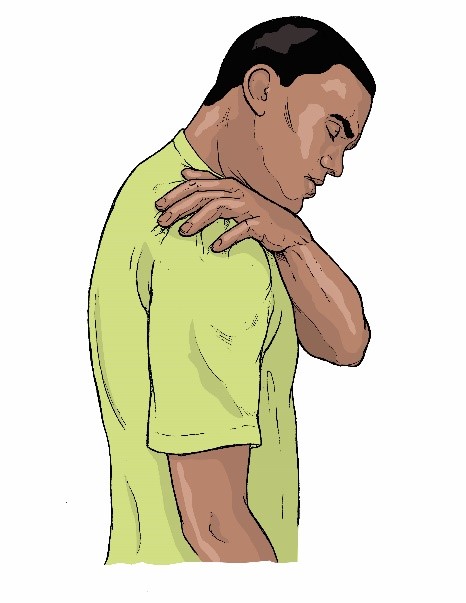Understanding Musculoskeletal Disorder (MSD)
Understanding Musculoskeletal Disorder (MSD)
Teaching is a profession that impacts and improves the lives of many students. But, many a times teachers end up risking their health in the process of making a change. Teachers are involved in an array of activities ranging from preparing lessons and assessing the students’ work, to being a part of the overall welfare of the school.
Studies have shown that teachers mostly experience back pain, neck pain, shoulder pain, Musculoskeletal Disorders (MSDs), knee pain and certain levels of daily discomfort.
 What is MSD?
What is MSD?MSDs are conditions that affect the muscles, bones and joints. They include conditions like:
1.Tendinitis
Tendons are thick cords that connect the muscles and the bones. Tendinitis is the irritation or inflammation of the tendons.
2.Carpal Tunnel Syndrome
CTS causes numbness and tingling in the hand and arm
3.Tension Neck Syndrome
This encompasses a variety of disorders involving the neck and the shoulder. The most common symptom is a dull pain in the neck region, where the neck connects the shoulder.
4.Rotator Cuff Tendinitis
This typically affects the shoulder joints and occurs when the tendons or muscles near the shoulder joint are inflamed.
5.Radial Tunnel Syndrome
This is characterized by a dull pain on the forearm, caused due to pressure on the radial nerves at the elbow.
6.Trigger Finger
Trigger Finger is a painful condition which causes the fingers or thumb to lock when bent.
7.De Quervain’s Syndrome
This is a painful inflammation of tendons in the thumb that extend to the wrist.
8.Mechanical Pain
It refers to any type of back pain caused by stress and strain on muscles of the spine
Factors resulting in MSD
Several work-related factors along with stress is said to induce MSD. Some of them are:
1.Workload
High workload can cause stress to the teachers and in turn it may result in MSD.
2.Individual factors
Individual factors like age and ability to cope up with stress can lead to MSD.
3.Repetitiveness and posture
Where the work involves a lot of repetition or a fixed posture with limited scope to move around, the educator may end up straining herself/himself. A fixed posture may result in a stiff back and stiff neck, or knee pain.
4.Poor Health and Fitness
A teacher should make time to stay healthy by doing some basic exercises every day. Exercising doesn’t mean that the educator becomes immune to MSD, but the impact of MSD is reduced.
 Diagnosing MSD
Diagnosing MSDThe treatment may vary according to the condition and the level of pain. It is advised to visit a doctor at the earliest, rather than ignoring the pain or opting for any kind of self-medication. A doctor may advise exercises or a scan, based on the severity of the condition.
But before the problem gets that bad, there are certain steps that can be taken by the educators themselves, to reduce pain. Some of them are:
1.Yoga
Reports state considerable improvements in people suffering from some form of MSD by including Yoga as a part of their lifestyle. Simple asanas like Surya Namaskar and Dhanurasana, practiced everyday can help in reducing the strain on the back.
2.Meditation
Meditation calms down the nerves and brings down the stress level. To being with, meditation can be done for 10 minutes daily and can then be increased to a longer duration.
3.Elbow and Wrist Exercises
Basic exercises involving the hand and wrist can help reduce MSDs.
4.Sharing workload
Educators can share their work load with each other, thereby reducing the stress on a single person.
5.Within the classroom
Educators can walk around or take short breaks instead of sitting or standing continuously, which may lead to back pain or knee pain.
Though the above mentioned diagnosis is something that the teachers can try, it is best if they consult a doctor as soon as they find any symptom of MSD like acute pain in the back or the neck, stiffness of the muscles, fatigue and disturbances in sleep pattern.





















